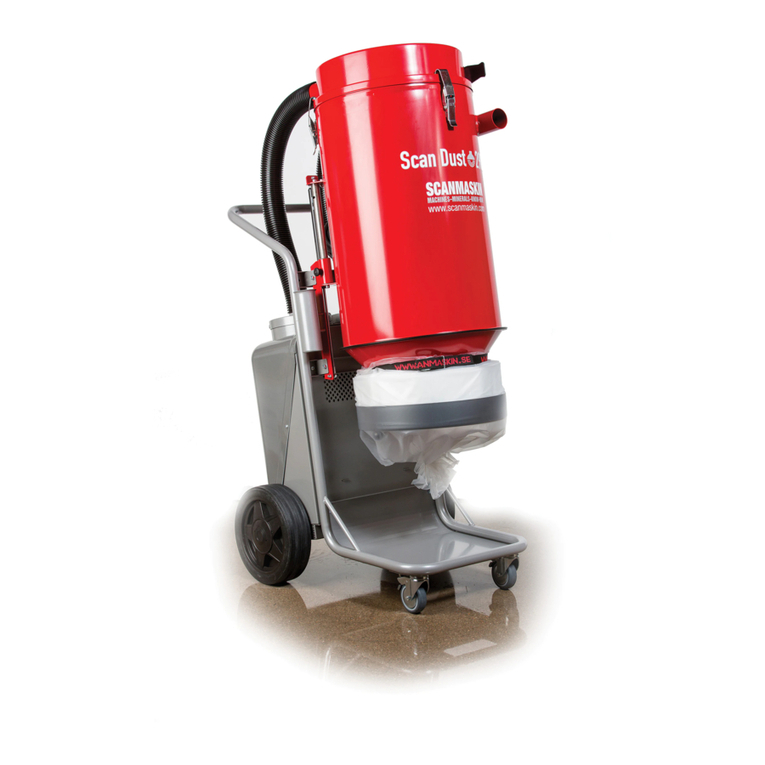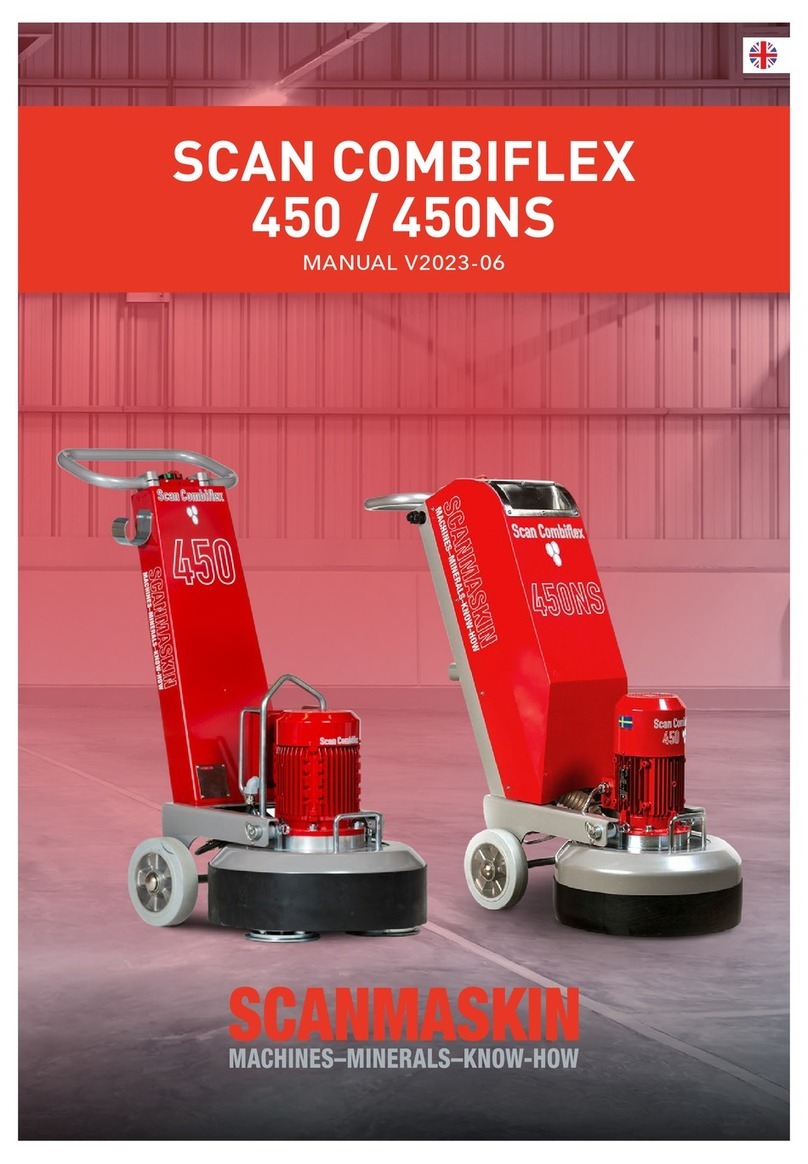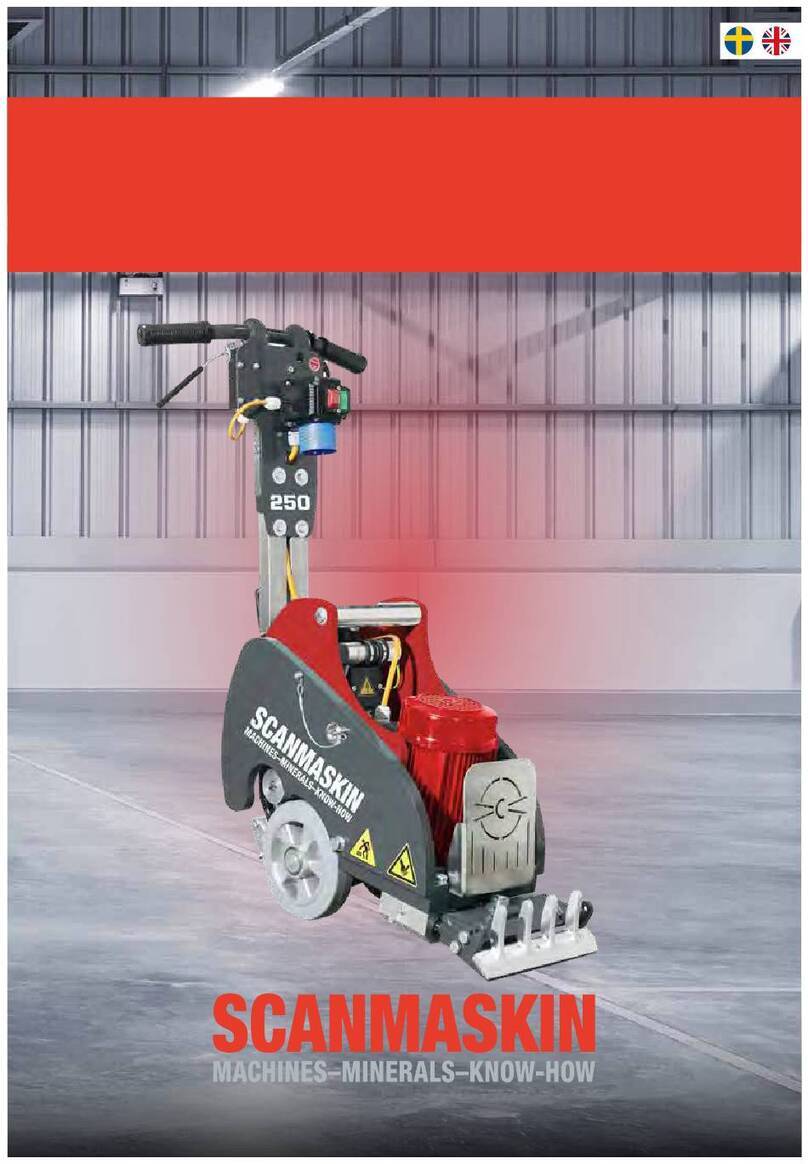
4www.scanmaskin.com
TABLE OF CONTENTS
1 Specications ...................................................................................................................................5
1.1 Power specications ........................................................................................................................5
1.2 Mechanical specications...............................................................................................................5
1.3 Water tank.........................................................................................................................................6
1.4 Tools ..................................................................................................................................................7
1.5 Range of application .......................................................................................................................8
1.6 Scope of supply ...............................................................................................................................8
1.7 Overview ...........................................................................................................................................9
2 Safety Regulations .........................................................................................................................10
2.1 Legend ............................................................................................................................................10
2.2 Safety precautions .........................................................................................................................10
2.3 Propane safety................................................................................................................................11
2.4 Fire Safety........................................................................................................................................11
2.5 Emissions ........................................................................................................................................11
2.6 Hazard Communication ................................................................................................................11
2.7 Local agencies and regulations....................................................................................................12
2.7.1 • NFPA .............................................................................................................................................12
2.8 Organizational measures ..............................................................................................................13
2.9 Personnel qualication ..................................................................................................................15
2.10 Safety regarding operation of machine .....................................................................................15
2.11 Propane tanks ...............................................................................................................................16
2.12 Relling propane tanks.................................................................................................................16
2.13 Storage propane tanks.................................................................................................................17
2.14 Denition of the “Safety off position”.........................................................................................17
2.15 Safety regarding maintenance ....................................................................................................17
2.16 Safety regarding transport..............................................................................................................18
2.16.1 Manual transport...........................................................................................................................18
2.16.2 Lifting..............................................................................................................................................18
2.16.3 Inside vehicles ...............................................................................................................................18
2.16.4 Inside vehicles ...............................................................................................................................18
3 Transport .........................................................................................................................................19
3.1 Precautions .....................................................................................................................................19
3.2 Manual transport............................................................................................................................19
3.3 Lifting...............................................................................................................................................19
3.4 Inside vehicles ................................................................................................................................19
3.5 Transporting propane tanks .........................................................................................................20
4 Operation........................................................................................................................................20
4.1 Preparation ....................................................................................................................................20
4.2 Precautions .....................................................................................................................................20
4.3 Operation of machine ...................................................................................................................21
4.4 Control panel..................................................................................................................................21
4.5 Throttle ...........................................................................................................................................22
4.7 Stop.................................................................................................................................................23
4.8 Emergency Stop ...........................................................................................................................23
4.9 Adjusting grinding speed............................................................................................................23
4.10 Safety off position .........................................................................................................................24































